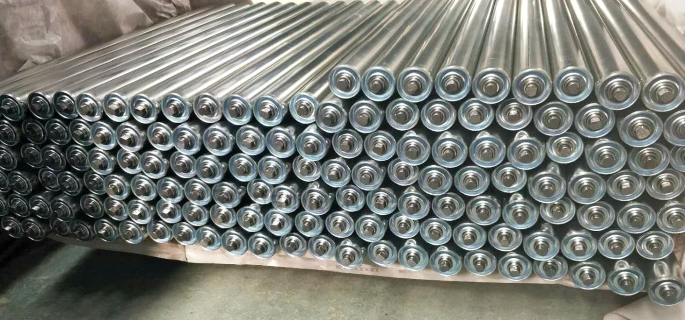Steel Roller HS Code 84425090 for Import and Export
In the complex world of international trade, Harmonized System (HS) codes serve as a universal language for categorizing goods, facilitating smooth customs clearance, and determining tariffs. Among the myriad of products that cross borders, steel rollers stand out for their critical role in various sectors, including manufacturing, printing, and conveyance systems. The steel roller HS code is essential for businesses and logistics operators to accurately classify these components, ensuring compliance with international trade regulations and optimizing the efficiency of global supply chains. Steel rollers, known for their durability and versatility, are integral to machinery across industries, from heavy manufacturing to intricate printing presses, making the precise identification of their HS code a key step in their trade process.Steel rollers are classified under various HS codes for export, including 84425090, 8482, 84829130, and 7308. Export data includes HS code 8302. Export data includes HS code 73089090 for iron and steel structures and HTS 731511 for roller chains of iron or steel.
What are HS Codes and Their Impact on Steel Roller HS Code Classification
The Harmonized System (HS) Code stands as the backbone of international trade, providing a systematic framework for the classification of goods across global borders. This intricate coding system is not just a bureaucratic necessity but a pivotal element in the smooth operation of global commerce, influencing everything from tariff rates to trade policies. When it comes to specific steel roller for steel production, the steel roller HS code becomes a critical piece of data, ensuring that these items are correctly classified, taxed, and monitored throughout their journey in international trade.
Global Significance of HS Codes
The HS Code system’s global significance cannot be overstated, as it touches on several key aspects of international trade:
- Universal Standardization: It creates a standardized system for naming and classifying traded products worldwide, simplifying communication and documentation.
- Trade Facilitation: By providing a clear and consistent classification system, HS Codes facilitate smoother trade negotiations and agreements between countries.
- Regulatory Compliance: They ensure that businesses adhere to international trade laws and regulations, minimizing legal risks and customs delays.
- Economic Analysis: Analysts and policymakers rely on HS-coded trade data for economic analysis, policy formulation, and decision-making.
- Safety and Security: The system helps in tracking and controlling the flow of hazardous materials and ensuring public safety.
- Environmental Oversight: HS Codes are instrumental in enforcing environmental regulations by monitoring the trade of environmentally sensitive goods.
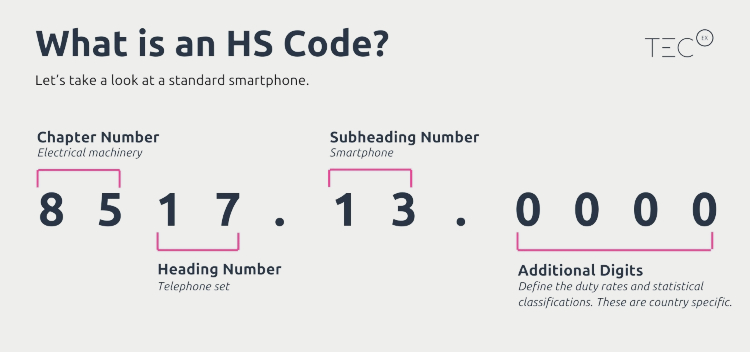
Role of HS Codes in Customs, Taxation, and Trade Policies
Delving deeper into the operational role of HS Codes reveals their multifaceted impact on customs procedures, taxation frameworks, and trade policies:
- Streamlining Customs Procedures: The precise classification of goods under their respective HS Codes expedites customs clearance, reducing waiting times and costs.
- Tariff Determination: The correct HS code is crucial for determining the applicable tariffs on goods, directly affecting the cost of importing or exporting products, including steel rollers.
- Policy Implementation: Governments utilize HS Codes to implement trade policies, enforce import/export restrictions, and engage in trade negotiations.
- Revenue Collection: Accurate HS coding is essential for the correct assessment and collection of taxes and duties, contributing significantly to national revenues.
- Regulating Trade: HS Codes are used to regulate the trade of restricted or prohibited items, ensuring compliance with international trade agreements and sanctions.
- Supporting Fair Trade Practices: They play a role in the application of anti-dumping and countervailing duties, protecting domestic industries from unfair international competition.
- Trade Statistics Compilation: The collection and analysis of trade data are facilitated by HS Codes, providing insights into global trade dynamics.
- Ensuring Product Safety: By classifying goods accurately, HS Codes help ensure that products meet the required safety and compliance standards.
- Protecting Intellectual Property: The system aids in combating the trade of counterfeit and pirated goods, thereby protecting intellectual property rights.
In the case of the steel roller HS code, the implications of accurate classification extend beyond mere compliance. It affects the product’s marketability, its tariff rates, and ultimately, the competitiveness of businesses involved in its trade. Understanding and correctly applying the steel roller HS code is therefore not just a regulatory requirement but a strategic necessity in the global marketplace.
Steel Roller HS Code: A Comprehensive Guide
Navigating the complexities of international trade requires a deep understanding of HS codes, especially for products as ubiquitous and essential as steel rollers. The steel roller HS code is a critical identifier that affects everything from tariff rates to regulatory compliance. This comprehensive guide delves into the specifics of conveyor roller HS code for steel rollers and their variants, providing insights into their implications for import-export activities across different jurisdictions.
Steel Roller HS Code 84425090
The general HS code for steel rollers is pivotal for businesses involved in their trade. It determines how these items are classified for customs and impacts the duties imposed on them.
- Global Classification: Identifies steel roller prices in international trade, facilitating uniformity in tariffs.
- Customs Clearance: Essential for smooth customs clearance across borders.
- Tariff Rates: Directly influences the tariff rates applied to steel rollers.
- Regulatory Compliance: Ensures compliance with international trade regulations.
- Trade Statistics: Used in compiling trade statistics that influence policy decisions.
- Market Analysis: Helps businesses conduct market analysis for strategic planning.
- Product Identification: Simplifies the identification of steel rollers in the global market.
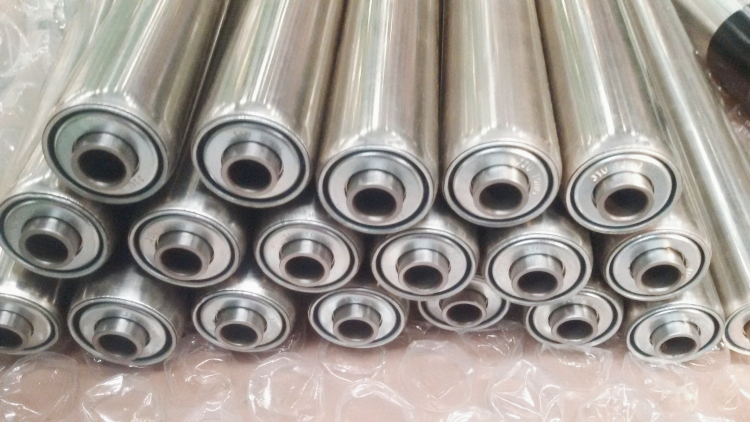
Stainless Steel Roller HS Code
Stainless steel rollers, known for their corrosion resistance, are classified under a specific HS code that distinguishes them from general steel rollers.
- Material Specificity: Highlights the material difference, affecting tariff and regulatory requirements.
- Corrosion Resistance: Recognizes the unique properties of stainless steel rollers.
- Premium Pricing: Influences the valuation and duty calculations due to material costs.
- Industry Applications: Marks its applications in industries requiring corrosion-resistant materials.
- Quality Standards: Ensures adherence to international quality standards for stainless steel products.
- Environmental Regulations: May impact compliance with environmental regulations specific to stainless steel.
- Trade Agreements: Affects how these rollers are treated under various international trade agreements.
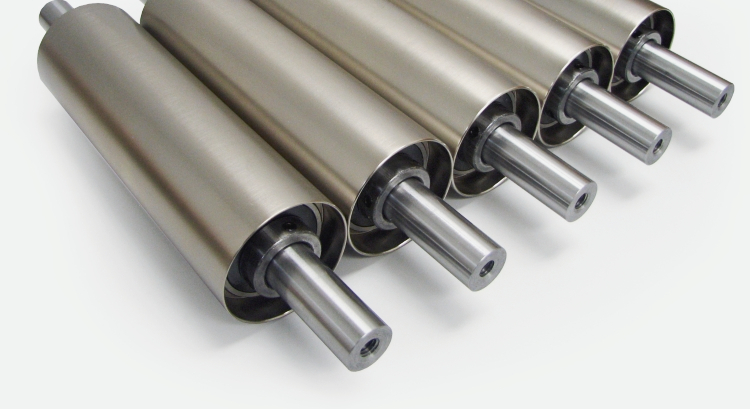
Steel Roller HS Code GST
The application of General Sales Tax (GST) on steel rollers varies by jurisdiction but is fundamentally linked to their HS code classification.
- Taxation Rates: Determines the GST rate applicable to steel rollers.
- Jurisdictional Variance: Highlights how different countries apply GST to these products.
- Compliance: Essential for tax compliance in domestic and international markets.
- Revenue Collection: Impacts government revenue collection from the trade of steel rollers.
- Price Structuring: Influences the final price structure for end-users.
- Financial Reporting: Affects how businesses report their finances and taxes.
- Cross-border Trade: Plays a role in the cost calculation for cross-border transactions.
Printing Steel Roller HS Code
Printing steel rollers, crucial in the printing industry for their precision and durability, are classified under a dedicated HS code.
- Industry Specificity: Tailored to meet the specific needs of the printing industry.
- Quality and Precision: Recognizes the high-quality standards required for printing applications.
- Innovation and Technology: Reflects the technological advancements in printing steel rollers.
- Trade Policies: Influences trade policies related to the import and export of printing equipment.
- Market Dynamics: Affects the market dynamics and competition within the printing industry.
- Regulatory Standards: Ensures compliance with standards for safety and efficiency in printing.
- Environmental Impact: Considers the environmental impact of manufacturing and recycling printing rollers.
HS Code Steel Embossing Roller
Steel embossing rollers, used to create patterns and textures, have their own HS code reflecting their specialized application.
- Textile and Manufacturing: Highlights their use in textile manufacturing and other industries.
- Design and Aesthetics: Acknowledges the role of embossing rollers in design and aesthetic applications.
- Customs Classification: Facilitates accurate classification and duty assessment.
- Innovation: Reflects the innovation in pattern and texture creation.
- Quality Control: Ensures that embossing rollers meet specific quality standards.
- Trade Data: Contributes to trade data for industries utilizing embossing techniques.
- Market Segmentation: Helps in the market segmentation of specialized manufacturing tools.
HS Code for Steel Roller Conveyor
Steel roller conveyors, essential for material handling and logistics, are categorized under a distinct HS code.
- Logistics Efficiency: Emphasizes their role in enhancing logistics and supply chain efficiency.
- Safety Standards: Ensures that conveyors meet international safety standards.
- Customs Duties: Affects the customs duties for calculate belt conveyor system.
- Global Trade: Facilitates the global trade of conveyor systems by standardizing classification.
- Industrial Applications: Recognizes the wide range of industrial applications of steel roller conveyors.
- Innovation in Material Handling: Reflects the continuous innovation in material handling technologies.
- Environmental Considerations: Considers the environmental impact of manufacturing and recycling conveyor systems.
Steel Metal Roller HS Code
Steel metal rollers, used in heavy machinery and construction, fall under a specific HS code that reflects their robust nature and applications.
- Construction and Machinery: Indicates their use in construction machinery and heavy equipment.
- Durability and Strength: Acknowledges the durability and strength required for heavy-duty applications.
- Tariff Implications: Influences the tariff implications for importing or exporting heavy machinery.
- Safety Regulations: Ensures adherence to safety regulations in construction and manufacturing.
- Technological Advancements: Captures the technological advancements in metal roller design and manufacturing.
- Economic Impact: Highlights the economic impact of the construction and machinery sectors.
- Sustainability: Considers the sustainability practices in the production and use of steel metal rollers.
HS Code for Stainless Steel Roller Chain
Stainless steel roller chains, key in transmitting mechanical power in machinery, are classified under a unique HS code.
- Mechanical Transmission: Focuses on their role in the mechanical transmission of power.
- Corrosion Resistance: Highlights the corrosion resistance of stainless steel chains.
- Industrial and Agricultural Use: Marks their widespread use in industrial and agricultural machinery.
- Quality and Reliability: Ensures the quality and reliability of stainless steel chains for critical applications.
- Global Supply Chains: Affects the global supply chains of machinery and equipment.
- Innovation in Design: Reflects innovation in the design and efficiency of roller chains.
- Environmental Sustainability: Considers the environmental aspects of manufacturing and recycling stainless steel chains.
Steel Brush Roller HS Code
Steel brush rollers, utilized in cleaning and surface preparation, are identified by a specific HS code.
- Cleaning Efficiency: Emphasizes their efficiency in industrial cleaning applications.
- Surface Preparation: Highlights their use in preparing surfaces for painting or treatment.
- Quality Standards: Ensures that brush rollers meet international quality standards.
- Innovative Materials: Reflects the use of innovative materials in brush construction.
- Environmental Health and Safety: Considers the health and safety implications of using steel brushes.
- Market Demand: Influences the market demand and supply dynamics for steel brush rollers.
- Recycling and Sustainability: Addresses the recycling and sustainability practices in the production of brush rollers.
HS Code for Steel Roller Bearing
Steel roller bearings, crucial
for the smooth operation of machinery, have a dedicated HS code.
- Operational Efficiency: Underlines their role in enhancing the operational efficiency of machinery.
- Durability and Performance: Focuses on the durability and performance standards of steel bearings.
- Global Manufacturing: Influences global manufacturing and engineering practices.
- Innovation in Engineering: Captures the continuous innovation in bearing technology.
- Regulatory Compliance: Ensures compliance with international standards and regulations.
- Trade and Tariffs: Affects trade policies and tariffs related to mechanical components.
- Sustainability in Production: Considers the sustainability aspects of producing and recycling bearings.
Steel Roller Parts HS Code
The various parts and accessories of steel rollers, including components essential for their function, are classified under specific HS codes.
- Component Specificity: Distinguishes between different types of parts and their applications.
- Replacement and Repair: Facilitates the international trade of replacement and repair parts.
- Customs and Duties: Affects the assessment of customs duties on roller parts.
- Quality Assurance: Ensures that parts meet specific quality assurance standards.
- Innovation in Components: Reflects innovation in the design and manufacturing of roller components.
- Supply Chain Management: Impacts the supply chain management of roller parts.
- Environmental Considerations: Addresses the environmental considerations in the production and disposal of roller parts.
This comprehensive guide to the HS codes for steel rollers and their variants underscores the importance of accurate classification in international trade. By understanding the specific HS codes applicable to different types of steel rollers, businesses can navigate the complexities of import-export regulations more effectively, ensuring compliance, optimizing tariffs, and facilitating smoother trade operations.

To Navigate Steel Roller HS Code
Understanding and accurately applying the steel roller HS code is crucial for businesses involved in the manufacturing, distribution, or import/export of steel rollers. The correct classification of these items not only ensures compliance with international trade laws but also optimizes customs processing and minimizes potential trade barriers. Here are nine essential tips for navigating the HS codes for steel rollers, followed by an exploration of the importance of precise HS code classification.
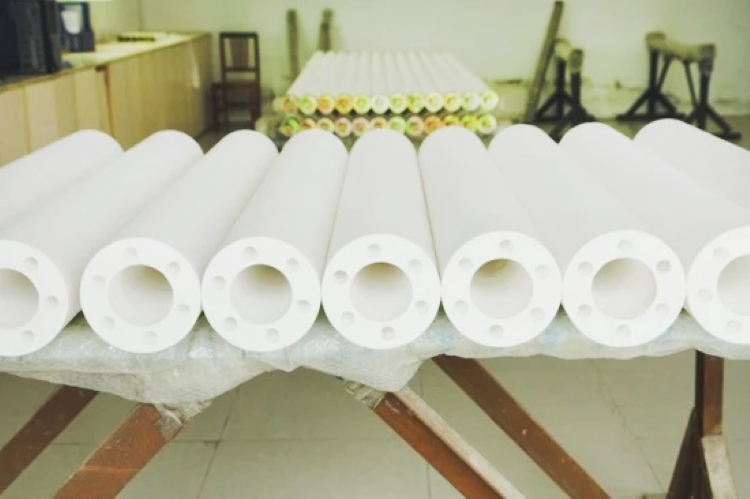
Tips for Accurate Classification of Steel Roller HS Code
Accurately classifying steel rollers under the correct HS code is a critical step in international trade, ensuring compliance, efficient customs processing, and optimal tariff application. Here are refined strategies to navigate this complex landscape:
- Comprehensive Product Analysis: Begin with a thorough analysis of the steel roller’s specifications, including material composition, intended use, and manufacturing process. This foundational understanding is crucial for accurate classification.
- Stay Informed on Updates: The HS code system is dynamic, with periodic updates reflecting new technologies or trade practices. Staying informed about these changes is essential for maintaining accurate classifications.
- Seek Expert Advice: Customs authorities and trade consultants offer valuable insights into the classification process. Their expertise can clarify ambiguities and provide authoritative guidance on the correct HS code for steel rollers.
- Utilize Digital Tools: Classification tools and databases can streamline the search for the correct HS code. While these technologies offer a starting point, they should be used in conjunction with expert advice and official documentation.
- Document Rationale for Classification: Keeping detailed records of how classification decisions were made can be invaluable, especially if your classification is later questioned by customs authorities.
- Engage with Industry Peers: Networking with industry peers can provide practical insights into classification challenges and solutions, offering a real-world perspective that complements official guidelines.
- Review Customs Rulings: Customs rulings on similar products can offer precedents for classification, providing a clearer path to determining the correct HS code for steel rollers.
Importance of Precise HS Code Classification
The precision in HS code classification transcends mere regulatory compliance, impacting every facet of international trade from cost to market access. Here’s why getting it right is paramount:
- Legal and Financial Compliance: Accurate classification is the first step in ensuring adherence to international trade laws, avoiding fines, penalties, and potential legal disputes.
- Customs Efficiency: Correct HS codes facilitate smoother customs clearance, reducing delays, and associated costs, thereby enhancing supply chain efficiency.
- Tariff Accuracy: Precise classification ensures that products are subject to the correct tariffs, preventing overpayment of duties and aiding in financial planning.
- Market Access: Proper HS code classification is often a prerequisite for market entry, with misclassification potentially leading to denied access or additional scrutiny.
- Trade Policy Compliance: Accurate HS codes ensure compliance with trade agreements and policies, which can offer tariff reductions or exemptions.
- Supply Chain Transparency: Clear classification practices contribute to transparency in the supply chain, building trust among partners and with regulatory bodies.
- Strategic Planning: Understanding tariff implications through accurate HS code classification can inform strategic decisions regarding sourcing, manufacturing, and market entry.
- Risk Management: Precise classification mitigates the risk of customs audits, re-classification, and the imposition of retroactive duties, contributing to a more predictable business environment.
Navigating the HS codes for steel rollers with precision is not just a regulatory requirement but a strategic advantage in global trade. By following these tips and recognizing the importance of accurate classification, businesses can ensure smoother operations, compliance, and potentially significant cost savings in their international trade activities.
Case Studies and Examples of Steel Roller HS Code Classification
The classification of steel rollers under the correct HS code is not just a procedural necessity but a strategic business decision that can significantly impact international trade operations. Through real-world examples, we can see how accurate HS code classification has facilitated trade, resolved challenges, and provided solutions for businesses dealing with steel rollers. Here are detailed insights into the complexities and strategic importance of correctly classifying steel rollers under their designated steel roller HS code.
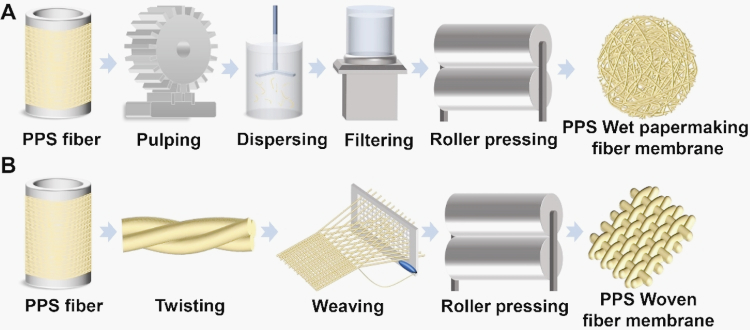
Real-World Impact of Correct HS Code Classification
The accurate classification of goods using the Harmonized System (HS) codes is more than a mere formality; it’s a critical component of global trade that significantly impacts the efficiency, cost, and legal compliance of exporting and importing goods. For products like steel rollers, the implications of correctly applying the steel roller HS code are profound. This section explores real-world examples where the precise classification of steel rollers under their appropriate HS codes has led to tangible benefits for businesses, highlighting the strategic advantages of mastering HS code classification in the international trade arena.
- Reduced Tariff Rates: A manufacturer of steel rollers discovered that by accurately classifying their products under the specific steel roller HS code for products intended for industrial machinery, they qualified for a lower tariff rate under a free trade agreement, resulting in substantial cost savings.
- Expedited Customs Clearance: A conveyor roller company to multiple countries faced delays due to inconsistent classification. By standardizing their classification according to the steel roller HS code, they achieved faster customs clearance, reducing storage and demurrage charges.
- Compliance with Trade Regulations: An importer was penalized for misclassifying stainless steel rollers, leading to incorrect duty payments. Correct classification under the precise stainless steel roller HS code ensured compliance with trade regulations and avoided future penalties.
- Access to New Markets: Accurate classification of steel rollers allowed a company to enter a new market that had strict import regulations. The correct steel roller HS code facilitated the necessary documentation and compliance checks, opening up a lucrative market.
- Resolution of Classification Disputes: A dispute arose when customs authorities classified a company’s steel rollers under a general category with higher tariffs. Providing detailed documentation and arguing based on the specific steel roller HS code led to a reclassification and reduced tariffs.
- Enhanced Supply Chain Efficiency: A logistics company improved its supply chain efficiency by accurately classifying steel rollers, enabling better forecasting of delivery times and costs, and optimizing their logistics operations.
- Avoidance of Misclassification Penalties: A business faced significant fines for the misclassification of steel roller parts. A thorough review and correction of their classification practices, aligning with the correct steel roller parts HS code, mitigated legal risks and financial liabilities.
- Strategic Sourcing Decisions: Understanding the tariff implications of different steel roller HS codes, a manufacturing firm made strategic sourcing decisions that minimized costs while ensuring quality, significantly impacting their bottom line.
Challenges and Solutions in Classifying Steel Rollers
Classifying steel rollers under the correct HS code presents a unique set of challenges, stemming from the intricate nature of these products and the complex framework of international trade regulations. These challenges can range from determining the right classification among similar categories to navigating the nuances of international customs requirements. This section delves into the common obstacles businesses face when classifying steel rollers and offers strategic solutions that have been successfully implemented to overcome these hurdles, ensuring compliance and optimizing trade operations.
- Material Variance: Differentiating between steel and stainless steel rollers poses a classification challenge. Solution: Detailed analysis of material composition and consulting with customs experts ensured accurate classification.
- Component Parts: Classifying component parts of steel rollers can be complex due to their variety. Solution: Creating a detailed catalog of parts with corresponding HS codes streamlined the classification process.
- Technological Updates: As steel roller technology advances, keeping classifications current is challenging. Solution: Regularly reviewing product innovations and updating HS code classifications accordingly.
- Global Variations in Classification: Different countries may interpret the steel roller HS code differently. Solution: Engaging with local customs brokers and using customs rulings as a guide helped navigate this challenge.
- Free Trade Agreements (FTAs): FTAs can affect tariff rates based on classification. Solution: Strategic classification under the correct HS code, considering FTA provisions, maximized tariff benefits.
- Documentation and Record-Keeping: Maintaining documentation for HS code justification is burdensome. Solution: Implementing a digital documentation system ensured easy access to records for customs verification.
- Customs Audits and Disputes: Facing customs audits and disputes over HS code classification can disrupt business. Solution: Proactive engagement with customs authorities and readiness with detailed product information and classification rationale minimized disruptions.
- Educating Stakeholders: Ensuring that all stakeholders understand the importance of accurate HS code classification is a challenge. Solution: Regular training sessions and updates on HS code changes kept everyone informed and aligned.
These case studies and examples underscore the critical importance of accurately classifying steel rollers under the appropriate steel roller HS code. They highlight not only the challenges faced by businesses in navigating HS code classification but also the strategic solutions that can be employed to overcome these obstacles, ensuring compliance, efficiency, and cost-effectiveness in international trade.
Advantages and Disadvantages of Imported Steel Roller
Steel rollers, vital components in many industrial applications—from conveyor systems to roller coasters—can be sourced domestically or internationally. Importing steel rollers often presents a unique set of advantages and disadvantages, impacted by factors like cost, quality, and lead times. This discussion delves into these aspects, providing a comprehensive understanding of the implications of choosing imported steel rollers for your projects.
Cost Efficiency
Advantages:
- Lower Prices: In many cases, imported steel rollers can be less expensive than their domestically produced counterparts, mainly due to lower labor and production costs in the manufacturing country.
- Bulk Purchase Discounts: Buyers often have the opportunity to negotiate better prices for large orders, thus significantly reducing the cost per unit.
Disadvantages:
- Additional Costs: Importing can involve extra costs, including tariffs, shipping, and customs fees, which might offset the initial lower price.
- Currency Fluctuations: Exchange rates can fluctuate significantly, potentially increasing the cost unpredictably over the time it takes to fulfill an order.
Quality and Standards Compliance
Advantages:
- Access to High-Quality Products: Many countries have a long-standing reputation for producing high-grade steel and precision engineering, offering top-quality products that meet or exceed domestic standards.
- International Standards Compliance: Imported steel rollers often adhere to stringent international quality standards, ensuring reliability and durability.
Disadvantages:
- Quality Inconsistency: Without careful vetting of suppliers, there’s a risk of encountering inconsistent product quality, which can affect project timelines and safety.
- Compliance and Certification Issues: Ensuring that imported steel rollers meet local regulatory and industry-specific standards can require additional time and resources for testing and certification.
Lead Times and Supply Chain Reliability
Advantages:
- Diversified Supply Chain: Importing can diversify your supply chain, potentially reducing the risk of delays due to domestic disruptions.
Disadvantages:
- Extended Lead Times: The time from order to delivery is typically longer for imported items due to the logistics involved in international shipping, which can delay projects.
- Supply Chain Vulnerability: Political instability, global health emergencies, and customs issues can all introduce unpredictability into the supply chain, leading to possible delays or increased costs.
In conclusion, while importing steel rollers can offer cost savings and access to high-quality products that comply with international standards, it also introduces challenges such as potential quality inconsistency, compliance issues, and extended lead times. Businesses must weigh these factors carefully, considering their specific needs, project timelines, and risk tolerance levels, to make an informed decision about sourcing steel rollers domestically or from abroad.
High-quality steel rollers for every industrial need. Contact us!
Advantages and Disadvantages of Exporting Steel Roller
Exporting steel rollers, which are crucial components used in various industrial and commercial applications worldwide, can be a significant growth opportunity for manufacturers. However, entering international markets also comes with its challenges. Below, we explore the key advantages and disadvantages of exporting steel rollers, breaking down the major aspects to consider for businesses in this industry.
Market Expansion and Revenue Growth
Advantages:
- Broader Market Access: Exporting allows manufacturers to tap into new markets outside their domestic boundaries, significantly expanding their customer base.
- Increased Sales Revenue: Access to international markets can lead to higher sales volumes not achievable if solely operating domestically, thus increasing overall revenue.
Disadvantages:
- Market Entry Barriers: New markets often have entry barriers such as stringent regulations, high competition, and the need for local market understanding, which can be difficult and costly to overcome.
- Economic Fluctuations: Exposure to multiple economies also means vulnerability to economic downturns in any of these areas, which can impact demand and profitability.
Brand Recognition and Competitive Advantage
Advantages:
- Enhanced Brand Visibility: Exporting steel rollers helps in building a global brand, enhancing the company’s reputation worldwide as a quality manufacturer.
- Competitive Edge: Being an active player in the global market can set a company apart from domestic-only competitors, offering an edge in both domestic and international markets.
Disadvantages:
- Increased Marketing Costs: Establishing a brand in a new market often requires significant investment in marketing and promotional activities to build awareness and credibility.
- Cultural and Language Barriers: Misunderstandings and miscommunications due to cultural differences and language barriers can negatively affect branding and customer relations.
Logistical Complexity and Costs
Advantages:
- Economies of Scale: Exporting can lead to larger production quantities, potentially decreasing the per-unit cost of production due to economies of scale.
Disadvantages:
- Higher Logistics Costs: Transporting goods internationally involves high logistics costs including shipping, insurance, and customs duties, which can erode profit margins.
- Supply Chain Risks: Long-distance transportation introduces risks such as delays, loss, or damage of goods, and complications in supply chain management due to differing international logistics practices.
Exporting steel rollers presents a complex but potentially rewarding strategy. While it offers opportunities for significant market expansion, revenue increase, and enhanced brand recognition, it also brings challenges like logistical complexities, increased operational costs, and the need to navigate diverse market dynamics. Manufacturers must consider these factors carefully, leveraging detailed market analysis and strategic planning to mitigate risks and capitalize on the benefits of exporting.
Steel Roller Import and Export HS Code
HS Code Used for Stainless Steel Roller – Import
HS Code Used for Stainless Steel Roller – Export
FAQs about Steel Roller HS Code
The HSN (Harmonized System of Nomenclature) code for steel rollers is a specific classification used primarily within India, under the broader Harmonized System (HS) used globally. This code is crucial for businesses and traders to classify steel rollers accurately for tax purposes, customs, and international trade documentation. The HSN code for steel rollers can vary based on the specific type of roller, its intended use, and its material composition. For general steel rollers used in industrial applications, the HSN code might align with the global HS code of 8455, which covers metal-rolling mills and rolls therefor. However, it’s important to consult the latest customs tariff schedules or seek advice from a customs broker or trade consultant to determine the precise HSN code for your specific type of steel roller, as classifications can change and may have additional subheadings for different types of rollers.
The HS code for metal rollers, including those made of steel or other metals, is determined by their specific characteristics and applications. Generally, metal rollers that are part of machinery or mechanical appliances fall under the HS code category 84, which encompasses nuclear reactors, boilers, machinery, and mechanical appliances; parts thereof. More specifically, metal rollers used in rolling mills are classified under HS code 8455. This category includes various types of metal-rolling mills, including rolls for such mills. Identifying the correct HS code for a metal roller requires a detailed understanding of its design, use, and the materials from which it is made. For precise classification, it’s advisable to review the detailed notes of Chapter 84 in the Harmonized System or consult with a customs expert.
Steel cable rollers, designed for managing and guiding steel cables in various applications, are classified under a specific HS code based on their design, usage, and the context in which they are used. While there isn’t a universally specific HS code exclusively for “steel cable rollers” due to the broad categorization of goods in the Harmonized System, these items might be classified under headings related to the machinery or equipment they are part of or the specific function they perform. For instance, if the steel cable roller is part of a larger piece of machinery, it could be classified under a code related to that machinery within Section XVI (HS codes 84-85), which covers machinery, mechanical appliances, and electrical equipment. For accurate classification, examining the role and application of the steel cable roller within its operational context is essential, and consulting the Harmonized System’s explanatory notes or a trade classification expert may be necessary.
HS Code 845530 specifically pertains to “Rolls for rolling mills.” This code is part of the broader category under HS Chapter 84, which deals with machinery and mechanical appliances; electrical equipment; parts thereof, including sound recorders and reproducers, television image and sound recorders and reproducers. HS Code 845530 encompasses the rolls used in metal-rolling mills, which can include various types of rolls designed for rolling metal into different shapes and forms. These rolls are crucial components of rolling mills, used extensively in the metalworking industry to produce metal products by passing metal stock through one or more pairs of rolls to reduce thickness, to make the thickness uniform, or to impart a desired mechanical property. Given the specificity of this code, it’s directly applicable to the components of rolling mills, highlighting the importance of this classification in identifying the correct tariff rates, regulatory requirements, and trade statistics for these industrial components.
HS Code 731511 specifically refers to “Parts Of Articulated Link Chain, Of Iron Or Steel.” Within the broader context of international trade, this code classifies components related to articulated link chains, made primarily of iron or steel. The classification is crucial for businesses involved in the manufacturing, buying, or selling of such parts, as it affects customs tariffs, trade policies, and shipping regulations globally. Steel rollers, as an integral component of various types of machinery and conveyance equipment, can fall under this category if they are part of or intended for use in articulated link chains. Identifying the correct HS code, such as 731511 for steel roller parts in articulated chains, ensures compliance with international trade laws, facilitates the accurate calculation of import/export duties, and streamlines the logistics and supply chain management processes for companies engaged in global commerce.
Last Updated on June 14, 2024 by Jordan Smith
Jordan Smith, a seasoned professional with over 20 years of experience in the conveyor system industry. Jordan’s expertise lies in providing comprehensive solutions for conveyor rollers, belts, and accessories, catering to a wide range of industrial needs. From initial design and configuration to installation and meticulous troubleshooting, Jordan is adept at handling all aspects of conveyor system management. Whether you’re looking to upgrade your production line with efficient conveyor belts, require custom conveyor rollers for specific operations, or need expert advice on selecting the right conveyor accessories for your facility, Jordan is your reliable consultant. For any inquiries or assistance with conveyor system optimization, Jordan is available to share his wealth of knowledge and experience. Feel free to reach out at any time for professional guidance on all matters related to conveyor rollers, belts, and accessories.

